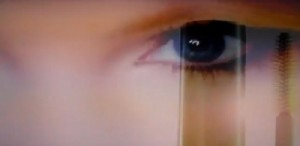There have been a bunch of articles lately out there regarding retouching and most of them aimed at the Beauty Industry. I guess they must be an easy target in regards to getting funds to “fight the pixel injustice” but I have to say I think it’s going a bit overboard now, and that concerns me. This particular ad had a DISCLAIMER that “lashes were enhanced in post production.” That alone should have covered it right? Of all the issues we face as a nation, are Taylor Swift’s eyelashes really that relevant? It’s advertising! And I have said it before, to open the retouching can of worms is a dangerous road to wander down. Where will it end? I think the money spent on this cause should be put into our education system so people will be smart enough to know the difference between real life and a projection of it, or at minimum to be literate so they can read disclaimers.
By: Jack Neff
Post-production enhancement of beauty advertising has been standard operating procedure from the age of the air brush to the age of Photoshop, but an action seen by some as long overdue from the National Advertising Division of the Council of Better Business Bureaus against Procter & Gamble Co.could change that.

Photo: An image captured from the Taylor Swift TV ad for CoverGirl NatureLuxe Mousse Mascara. P&G withdrew a print version of the ad following an NAD inquiry into retouching of photos.
The NAD today announced that P&G had discontinued superior-performance claims and a post-production-enhanced photograph in print advertising for its CoverGirl NatureLuxe Mousse Mascara after the industry self-regulatory forum launched an inquiry into the claims and photos. Taylor Swift has appeared in the product’s print and TV ads, from WPP’s Grey Global Group.
While advertising regulators in the U.K. have aggressively gone after beauty ads with retouched images for years, this appears to be a first in the U.S. and a signal that the NAD plans to begin monitoring the practice, said Chris Cole, an attorney who specializes in advertising law for Manatt Phelps & Phillips in Washington. From a legal standpoint, retouching photos so they create a misleading impression of product effectiveness is clearly prohibited, he said.
But competitors in an industry where post-production work is commonplace haven’t challenged one another’s ads up to now, said beauty consultant Suzanne Grayson.
That the NAD has stepped in to challenge the practice on its own is significant and could have far-reaching impact, Mr. Cole said.
“In a way I’m not surprised, to tell the truth,” he said, noting that the issue is one likely to appeal to NAD senior VP and director Andrea Levine.
In a statement, the NAD said it requested substantiation from P&G for express claims that the CoverGirl product produced “2X more volume” vs. bare lashes and was “20% lighter” than the most-expensive mascara. It also considered whether the ads conveyed the implied messages that consumers who use the product would get lashes like those depicted and that the lashes depicted were achieved solely by using the CoverGirl product. The ads at issue did bear the disclaimer “lashes enhanced in post production.”
Continues at: National Ad Division Goes After Retouching of Beauty Ads | News – Advertising Age.
Related articles
- U.S. Moves Toward Banning Photoshop In Cosmetics Ads (PG) (businessinsider.com)
- Photo Retouching in Advertising (mediawatchkevin.wordpress.com)










